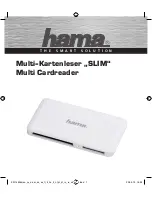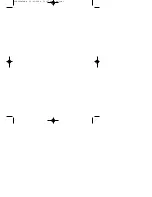
- 2 -
VRX935VD
To engineers in charge of repair or
inspection of our products.
Before repair or inspection, make sure to follow the
instructions so that customers and Engineers in
charge of repair or inspection can avoid suffering
any risk or injury.
1. Use specified parts.
The system uses parts with special safety features against
fire and voltage. Use only parts with equivalent character-
istics when replacing them.
The use of unspecified parts shall be regarded as remod-
eling for which we shall not be liable. The onus of product
liability (PL) shall not be our responsibility in cases where
an accident or failure is as a result of unspecified parts
being used.
2. Place the parts and wiring back in their original positions
after replacement or re-wiring.
For proper circuit construction, use of insulation tubes,
bonding, gaps to PWB, etc, is involved. The wiring con-
nection and routing to the PWB are specially planned us-
ing clamps to keep away from heated and high voltage
parts. Ensure that they are placed back in their original
positions after repair or inspection.
If extended damage is caused due to negligence during
repair, the legal responsibility shall be with the repairing
company.
3. Check for safety after repair.
Check that the screws, parts and wires are put back se-
curely in their original position after repair. Ensure for safety
reasons there is no possibility of secondary ploblems
around the repaired spots.
If extended damage is caused due to negligence of repair,
the legal responsibility shall be with the repairing company.
4. Caution in removal and making wiring connection to the
parts for the automobile.
Disconnect the battery terminal after turning the ignition
key off. If wrong wiring connections are made with the bat-
tery connected, a short circuit and/or fire may occur. If ex-
tensive damage is caused due to negligence of repair, the
legal responsibility shall be with the repairing company.
5. Cautions regarding chips.
Do not reuse removed chips even when no abnormality is
observed in their appearance. Always replace them with
new ones. (The chip parts include resistors, capacitors,
diodes, transistors, etc). The negative pole of tantalum
capacitors is highly susceptible to heat, so use special care
when replacing them and check the operation afterwards.
6. Cautions in handling flexible PWB
Before working with a soldering iron, make sure that the
iron tip temperature is around 270 . Take care not to ap-
ply the iron tip repeatedly(more than three times)to the
same patterns. Also take care not to apply the tip with force.
7. Turn the unit OFF during disassembly and parts replace-
ment. Recheck all work before you apply power to the unit.
8. Cautions in checking that the optical pickup lights up.
The laser is focused on the disc reflection surface through
the lens of the optical pickup. When checking that the la-
ser optical diode lights up, keep your eyes more than 30cms
away from the lens. Prolonged viewing of the laser within
30cms may damage your eyesight.
9. Cautions in handling the optical pickup
The laser diode of the optical pickup can be damaged by
electrostatic charge caused by your clothes and body. Make
sure to avoid electrostatic charges on your clothes or body,
or discharge static electricity before handling the optical
pickup.
9-1. Laser diode
The laser diode terminals are shorted for transporta-
tion in order to prevent electrostatic damage. After
replacement, open the shorted circuit. When remov-
ing the pickup from the mechanism, short the termi-
nals by soldering them to prevent this damage.
9-2. Actuator
The actuator has a powerful magnetic circuit. If a
magnetic material is put close to it. Its characteris-
tics will change. Ensure that no foreign substances
enter through the ventilation slots in the cover.
9-3. Cleaning the lens
Dust on the optical lens affects performance. To
clean the lens, apply a small amount of isopropyl
alcohol to lens paper and wipe the lens gently.
EXPLANATION OF IC
052-5041-53
TMP95CW64F-4N56(Z) DVD Mechanism Control-
ler
1.Terminal Description
pin
1: A Vref
: IN : Reference voltage for the internal ADC.
pin
2: A VSS
: - : Analog ground.
pin
3: A VCC
: - : Positive supply voltage for the internal
analog section.
pin
4: NU
: - : Not in use.
pin
5: NU
: - : Not in use.
pin
6: Connect 7
: IN : Connect to pin7.
pin
7: EJECT SW
: IN : Eject switch signal input.
pin
8: A MUTE
: O : The audio mute signal output.
pin
9: SYS P 1
: O : System power 1 control signal output.
pin 10: NU
: - : Not in use.
pin 11: RESET
: O : Reset signal output.
pin 12: TEST 0
: O : For the test.
pin 13: TEST 1
: O : For the test.
pin 14: TEST 2
: O : For the test.
pin 15: TEST 3
: O : For the test.
pin 16: MCW
: O : Loading motor control output.
pin 17: MCCW
: O : Loading motor control output.
pin 18: TX D2
: O : The serial data output.
pin 19: RX D2
: IN : The serial data input.
pin 20: DVD R DE CS : O : The chip select signal output to the DVD
ROM decoder.
pin 21: DVD PRO CS
: O : The chip enable signal output to DVD
processor.
pin 22: NU
: - : Not in use.
pin 23: SPNDL CNT
: O : Spindle control output.
pin 24: NU
: - : Not in use.
pin 25: VCC
: - : Positive supply voltage.
pin 26: GND
: - : Ground.
pin 27: X 1
: - : Crystal connection.
pin 28: X 2
: - : Crystal connection.
pin 29: CNNCT VCC
: IN : Connect to VCC.
pin 30: RESET
: IN : Reset signal input.
pin 31: ACC CNT
: IN : ACC ON signal input.
pin 32: NU
: - : Not in use.
pin 33: LE TIME
: O : For loading/eject time.
pin 34: FG PULSE
: IN : FG pulse input.
pin 35: DISC MT SHRT : IN : Disc motor short brake.
pin 36: DATA REQ
: O : The data request.
pin 37: D PRO INT
: IN : The interrupt signal input from DVD pro-
cessor.
pin 38: CMMD DT REQ : O : The command data request output.


























